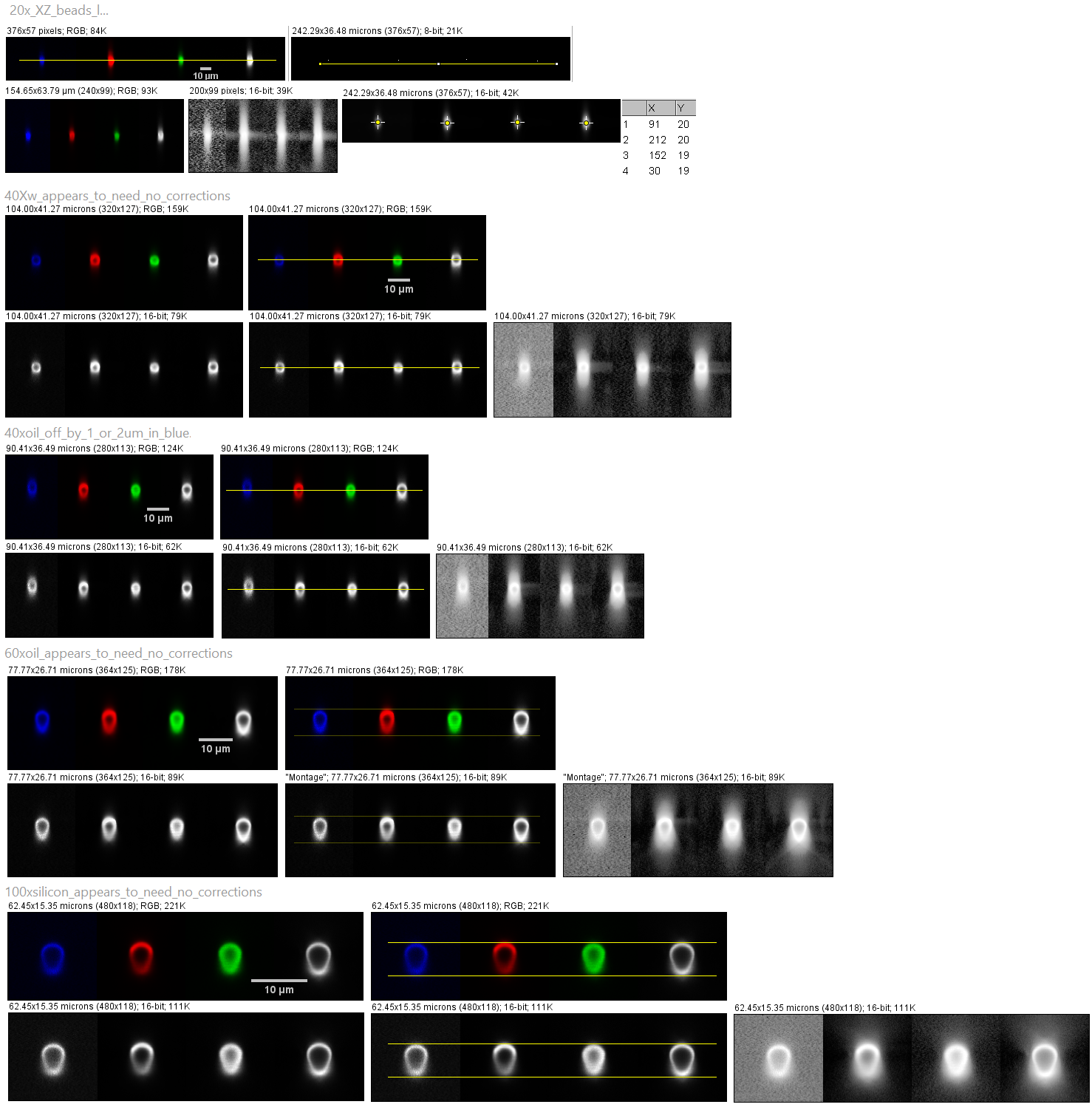
The goal of these tests was to see how well the lenses are chromatically corrected. This is important to know for registration of objects of different colors in the Z axis. Anyone claiming colocalization (or discrete localization) needs to know that the system is aligned in X, Y, and Z axes. X and Y can be corrected by shifting the cameras but Z would have to be corrected by knowing the offset due to wavelength of light and then shifting the focus between two different color exposures accordingly. (There are different methods for doing this depending on the particular experiment.)
The general conclusion is that for objects on the order of 1 um or larger, the Z axis is well aligned across the spectrum.
These tests were with 4 um TetraSpeck beads stuck to a #1.5 coverglass with poly-L-lysine. The beads are in water. And the beads are large. For all lenses with correction collars, the 0.17 coverslip was set at RT.
If you are imaging deeper in samples with variable refractive indices and need to know the Z axis colocalization, I recommend running beads tests in your samples or in a better approximation of you samples, such as in agarose or a collagen plug at the same depth.
Also, anyone concerned about resolution at the level of diffraction limited objects needs to have this repeated with 100 nm beads with the lens being used at the experimental temperature.
These tests were a first try.
Channels in this order:
ex em nm
CH1 405 - 460
CH2 561 - 590
CH3 488 - 530
CH4 640 - 670
All the images below are XZ reslices through Z series taken with orthogonal sampling. The horizontal yellow lines mark a single focal plan. The last image in each block is contrast equalized to show scattered light. Only for the 20X lens were the bead centers located by two different methods and measured by the find maxima method.

The beads are spherical. Note that the side at the coverslip looks circular but that the side away from the coverslip looks stretched or ovoid. This is due to aberrations mostly because beads do not have the same refractive index as the water the beads are in.
The 40X oil lens appears to have chromatic aberration in the blue channel. All the other lenses look great at the sampling scale of 1 um.
The result with the 60X oil lens showing minimal shift in Z axis is surprising because with 0.1 um beads, there appeared to be a shift. If looking at diffraction limited structures, this test needs to be repeated with 100 nm beads as the 4 um beads are orders of magnitude larger.
The 100X correction collar was set to 0.17 at 23 degrees C. For 37 degrees, this would need to be repeated.
Imaging done 20190607 and webpage last updated 20190607